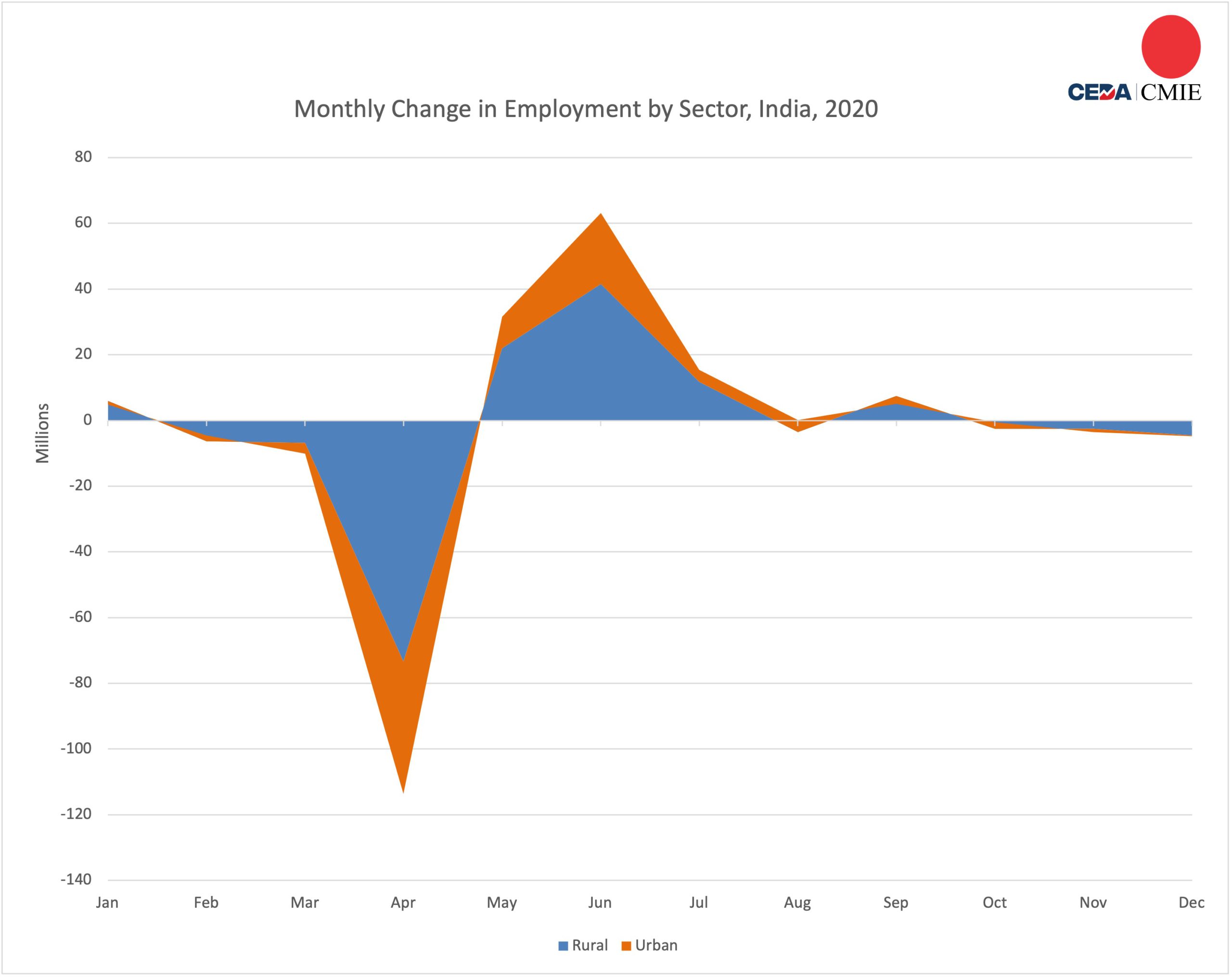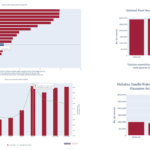India’s Budget 2021-22: A Passing Grade
Any evaluation of major policy documents such as the annual budget must keep the context in mind. This is particularly true at this juncture because these have been extraordinary times with the global pandemic having battered practically every national economy. The Indian economy has suffered more than most others with GDP plummeting by 7.7 percent during the last financial year. What is worse is that it is the bottom third of the population that has suffered the most. So, it was crucial for the Finance Minister and her team to formulate a budget that would enable the economy to stage a dramatic recovery while at the same time ensuring that the overall growth process exhibits a pronounced pro-poor tilt. This was no easy task because the virtual collapse of all economic activity for much of the year has left government coffers empty, with both tax and non-tax revenues being significantly lower than expected.
How does the Finance Minister fare in terms of these criteria? I would not give her very much more than a passing grade. While there are several positive features in the budget, the overall thrust is disappointing because it does not address the needs of the poor.
The budget does have a clearly articulated growth strategy, with a steep increase in capital expenditure supposed to act as the principal driver of growth. Overall capital expenditure is budgeted to go up by 34.5 percent compared to 2020-21 budget estimates, with infrastructure sectors like roads and highways, railways, textiles being the favoured destinations.
The overall growth target is 14.4 percent of growth in nominal GDP during the year. This translates to 11 percent in real terms, a number that is just below a recent IMF forecast. At first sight, this sounds quite impressive. Unfortunately, this would mean that the economy will have grown by only 3.5 per cent over two years or at an annual rate of 1.75 percent! This blot on the growth performance can only be wiped away if this is just the beginning of a period –lasting several years– of sustained high rates of growth. Possibly the emphasis on the capital sector is at least partly designed to ensure that the returns flow over many years, so as to give a boost to long-term growth objectives.
The Finance Minister must be hoping that since road construction and other infrastructure projects are relatively labour intensive, the pattern of new investments will have a significant impact on employment. Perhaps, she also has faith that the proposed mega textile parks will also boost employment opportunities since the textile industry is also quite labour intensive. Unfortunately, the budget does not contain any specific proposals or schemes that are designed to boost employment. There has been some discussion about implementing some urban version of the MGNREGA. Of course, the budget speech does not mention any such plans. In fact, the budgetary allocation to MGNREGA itself for 2021-22 will be almost 30 percent lower than the revised estimate for 2020-21. Note, however, that there was a steep increase in the allocation to the scheme during the year in order to provide employment to migrants after they fled from the urban areas.
Clearly, there is absolute faith in the efficacy of the trickle-down process. This is a tall order given the magnitude of the distress suffered in both rural and urban India. Chart 1, based on CMIE data, shows the month-on-previous-month change in employment in both the rural and urban sectors. Total employment fell by 113 million in April 2020 following the stringent lockdown which started in the last week of March. There was some recovery in the following couple of months but virtual stagnation after that.
Chart 1

Indeed, the absence of any explicit pro-poor or distributional measures is undoubtedly the most glaring omission in the budget. The allocation for MGNREGA could have been kept at a level closer to the revised estimate for 2020-21. Some version of an urban MGNREGA could have been started – even if as a “pilot” project. The government can also, at least for a limited period, distribute larger amounts of food grains more widely from the overflowing warehouses of the FCI. The buffer stock is so far in excess of any reasonable levels that a sizeable fraction will rot or be eaten by rats. And direct transfers of small amounts of cash to targeted sections of the population would have been a wonderful step.
India’s Fiscal Stimulus in international perspective
The seeming reluctance to provide large doses of financial stimulus has actually been a pattern observed for over a year. Cross-country comparisons also confirm that the Indian government has adopted a relatively conservative fiscal response to the pandemic. Chart 2 is based on an IMF summary of country wise fiscal measures in response to the pandemic as of December 31, 2020 for selected economies. The numbers represent the percentage of above-the-line spending (additional revenue and revenue foregone) as a percentage of the country’s GDP. India and Brazil have had a significantly higher incidence of Coronavirus cases amongst the BRICS countries. But Brazil’s spending has been significantly more than that of India. India and Russia occupy the lowest positions (in terms of above-the-line measure as fraction of GDP). Not surprisingly, the richer countries have been able to be considerably more pro-active.
The government did roll out several packages to mitigate the effects of the pandemic. But, virtually all of them were supply side measures; the access to cheaper and easier sources of credit being a principal component of these packages. Total expenditure did go up during the year, rising by over Rs 4 lakh crores. However, the bulk of this has been not income support or health expenditure. An overwhelming fraction of the additional expenditure has been incurred on food, fertilizer-related subsidies as well as for increase in MGNREGA outlays. Of course, the increased expenditure on food and MNREGA were important sources of support to many. But they played no role in increasing demand and stimulating economic recovery.
Despite the modest increase in expenditure, the revised fiscal deficit for 2020-21 will be 9.5 per cent of GDP, fully 6 per cent above the budget estimate. The dramatic decline in GDP meant that the same absolute size of the fiscal deficit was magnified several folds. Another important reason for this steep increase in the fiscal deficit is the sharp decline in disinvestment receipts. Contrary to earlier apprehensions, there was only a small reduction in tax receipts.
The budget deficit estimated for next year is 6.8 per cent. As a matter of fact, the actual number twelve months from now may be much worse. The budget has assumed disinvestment receipts to be Rs 1.75 lakh crores during 2021-22. This is a very ambitious target – both the UPA and NDA governments have consistently failed to achieve ambitious disinvestment targets in the past and there is no compelling reason to believe that the situation will be very different now. So far, the deficit has been financed by huge increases in market borrowings as well as through dipping into small savings. Debt servicing will become even more of a headache in future years. Against this background, perhaps it is not surprising that the Finance Minister has adopted a relatively conservative fiscal stance.
There are some positives in the budget. For instance, there has been a conscious effort to avoid fudging of data – no mean feat in India. The usual practice so far was to hide the size of the food subsidy bill by passing it off as Food Corporation of India market borrowings. This practice has been shelved and the FCI will have to be funded transparently from now on. The government has also taken another big step forward by clearing off the arrears of the fertilizer industry.
The budget speech has also been remarkably brave by announcing plans that go against the received doctrine of what is politically acceptable. The government has announced that it will raise the FDI limit in insurance to 74 percent. The government will also reduce its holding in the LIC and sell off two public sector banks. The Finance Minister even went so far as to use the word “privatization” in this connection! Of course, we will have to wait and see the degree to which these plans can be successfully implemented. But the intention has been clearly spelt out.
Not surprisingly, a large sum of Rs 35,000 crores has been allocated to Covid-19 vaccination. Water and sanitation will also receive additional outlays. The Finance Minister has also announced new centrally sponsored initiative to develop capacities of primary, secondary, and tertiary health care systems to detect and cure new diseases. But a very regressive step is the neglect of the education sector – there has actually been a 6 per cent reduction in the allocation to the education ministry. This government has repeatedly emphasized its desire to build a knowledge economy, to strengthen universities and research institutions to compete with the best in the world. Surely, this is not the right way to achieve these goals.
Among the more disappointing features of the budget is the strengthening of protectionist tendencies. The budget seeks to remove exemptions on a number of items and increase rates on a few others. It is more than slightly ironic that the current government is turning the clock back to practice policies that were very much in vogue during the Nehru years. After all, Jawaharlal Nehru is far from being a guru to anyone in the higher echelons of the BJP party. At any rate, the encouragement of domestic industries behind high tariff walls is myopic beyond belief. It does not promote self-reliance, but only high cost industries that cannot compete on global markets. In some cases, an increase in tariffs on intermediates does not even benefit domestic intermediate producers simply because there are none! This seems to be the case for some components used in the manufacture of mobile phones.
This is not a good year in which to be the Finance Minister. There are too many objectives to be satisfied and far too instruments with which to satisfy them. One has to choose which goals to implement. Unfortunately, the Finance Minister has not chosen wisely.
Reprinted with permission from Ideas for India. This is a revised version.







